How Northeastern researchers are using exoskeletons and futuristic devices for everyday mobility
Northeastern graduate students at professor Max Shepherd’s lab help design and wear futuristic devices that may help people walk someday.
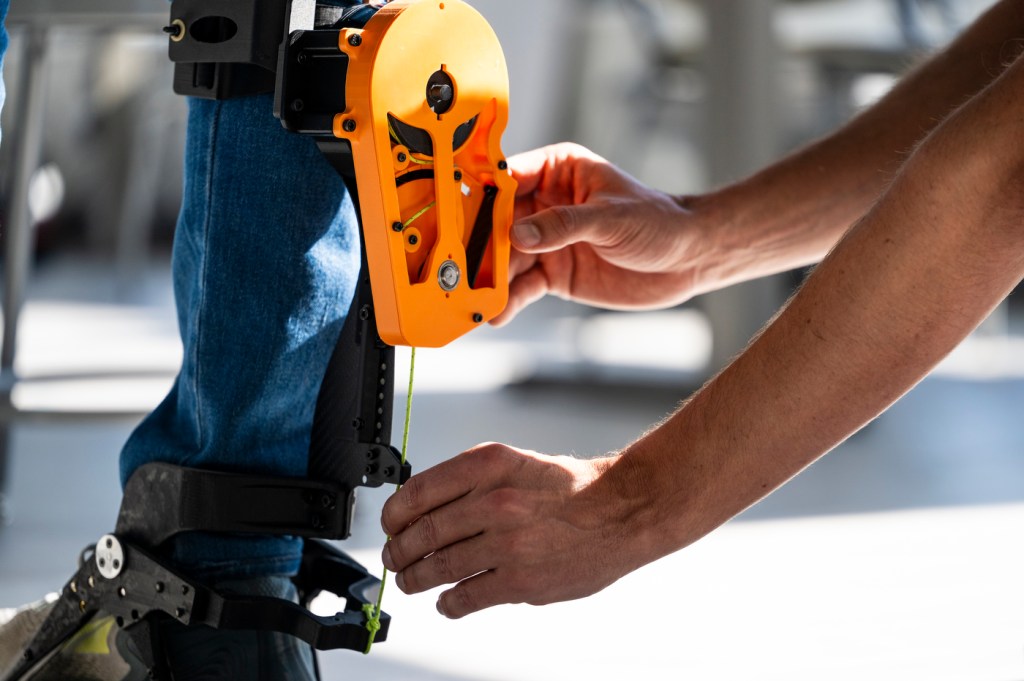
Fatima Tourk wears one thick velcro belt around her waist and another around her right upper leg as she walks the whirring treadmill at a relaxed, comfortable speed.
But the exercise is even easier than it appears. For Tourk is receiving a boost to her right hip from a battery-powered exoskeleton that she has helped create.
“It feels pretty natural,” says Tourk, a Northeastern University Ph.D. candidate in mechanical engineering. “You can definitely feel it lifting your leg up a little bit. I would say it’s pretty comfortable to walk.”
Tourk is among the graduate students assisting in the development of exoskeletons at Northeastern’s Shepherd Lab, where professor Max Shepherd leads efforts to design controllers for wearable robotics.
“The long-term vision is to have what we call ‘partial-assist exoskeletons’ that provide an assistive force to the body to help make it easier to walk,” says Shepherd, an assistant professor of physical therapy, human movement and rehabilitation sciences whose lab work is funded by a National Science Foundation grant. “This would be most beneficial for patients who have different mobility challenges. You can imagine kids with cerebral palsy or people who have had a stroke could put on this device. They could walk more efficiently, faster and more symmetrically, maybe with a lower hazard of tripping and falling.”
It’s a competitive field with the potential of benefiting millions of patients who struggle with everyday movement. Companies and academic researchers — including Shepherd and his Northeastern colleague Seungmoon Song, an assistant professor of mechanical and industrial engineering who directs the NeuMove Lab — are working in concert to resolve the many issues facing this futuristic technology.
“There are a lot of fundamental issues that academia needs to solve,” Shepherd says of his ongoing exoskeleton research. Unlike companies competing in the marketplace, he adds, “We don’t have to sell this in the next couple years. So we can focus deeply on these really tough questions. The timeline for us solving them is 10 years away.”
Two of the biggest issues are wearability and versatility.
“They are big, they’re heavy, they’re clunky, they’re hard to put on and take off,” Shepherd says of the current prototypes. “And so we’re developing new robotic designs that are lightweight and strike certain trade-offs that we think are particularly important for getting out of the lab.”
Shepherd has a vision for the future of exoskeletons.
“Eventually it will look halfway between Iron Man and clothing, with the goal being as many parts are made of fabric or foams, rubbers and plastics,” Shepherd says. “But we have found that we almost certainly need some amount of rigid structure in order to help transmit the exoskeleton forces to the body. And so one of the goals is to have as minimal rigid componentry as possible.”
The second issue involves the complexity of movement. Developing an exoskeleton that helps someone walk in a straight line isn’t practical. Walking comprises all kinds of movements that deviate from that straight line — which means an exoskeleton needs to anticipate, discern and react to the ever-changing needs of its wearer.
“We’re developing data-driven control algorithms that allow you to do more than one task,” Shepherd says of the mission to create exoskeletons for the real world. “There are big studies where people are spending hours and hours on a treadmill while researchers fine-tune the control algorithms and the behavior of these devices until they get some optimal control parameters.”

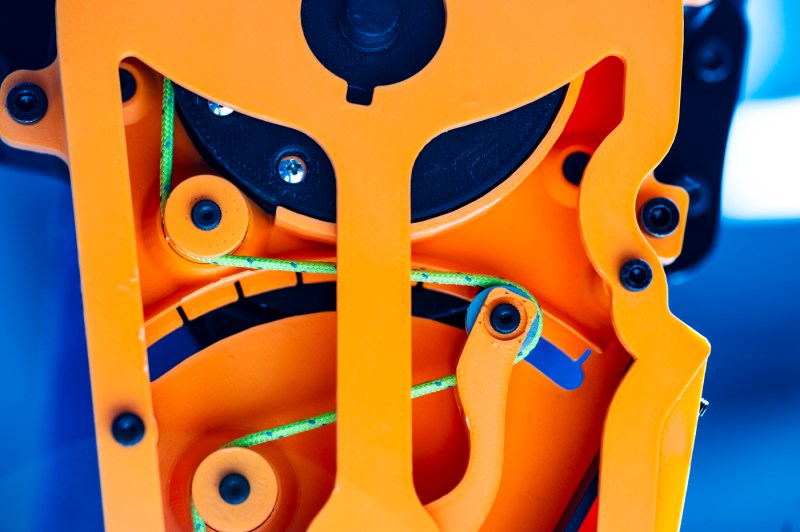
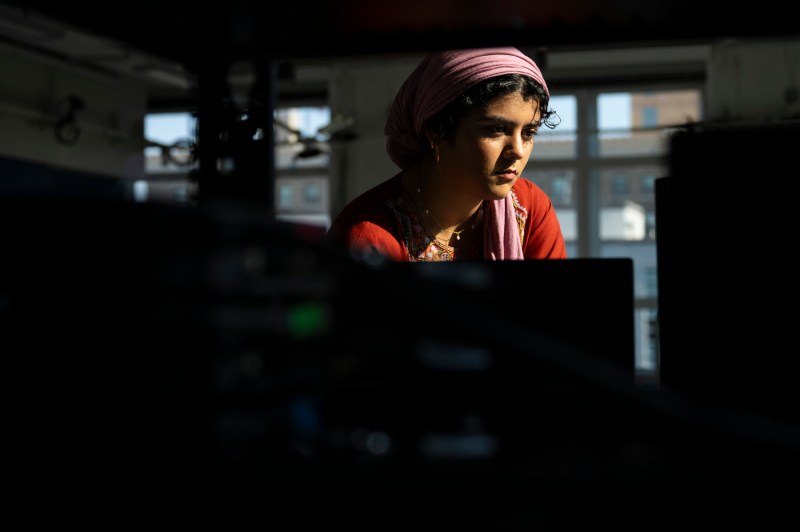
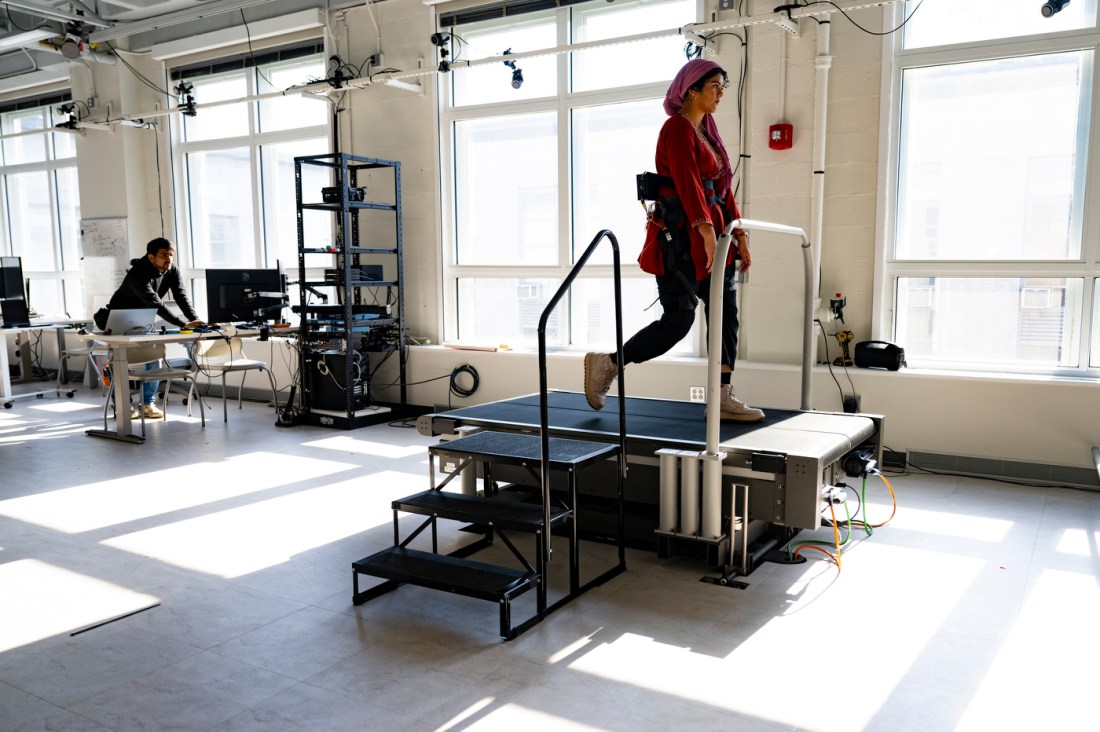
But the treadmill itself fails to replicate real-life walking conditions. That’s why it was big news this month when Shepherd joined collaborators at Georgia Tech and Google in publishing research in Nature on a new lower-limb exoskeleton that assisted during 28 activities.
“The dream has been around for 30 or more years, but in the last 10 years it has ramped up pretty dramatically,” Shepherd says. “Actuators have gotten better. We’ve got machine learning techniques now to deal with all of the possible information we’re getting from the sensors.”
Shepherd’s lab is a long, bright rectangular area with a lot of open space in Richards Hall on the university’s Boston campus. His team’s handmade prototypes are powered by battery packs normally used for rechargeable drills and other tools.
Divyansh Gupta, a Northeastern master’s student in robotics, wraps two velcro straps of an ankle exoskeleton around his lower right leg. As he walks a pulley can be heard reeling in and out, like a deep-sea fisherman playing a big catch on the line. The pulley is helping lift Gupta’s heel.
“This mechanism is working in parallel to the soleus muscle at the back (of the leg),” Gupta says as he walks. “It acts as an artificial muscle and supports the body’s natural biological muscles. For me, I feel my muscles having to do less work.”
Gupta says the lab work is triggering his vision of how future generations may be supported.
“It gives me the capability to imagine the future of how we are going to augment this,” he adds, looking down at the orange contraption extending from his leg. “And it’s not just the ankle exo or the hip exo — the augmentations will happen for any body part.”
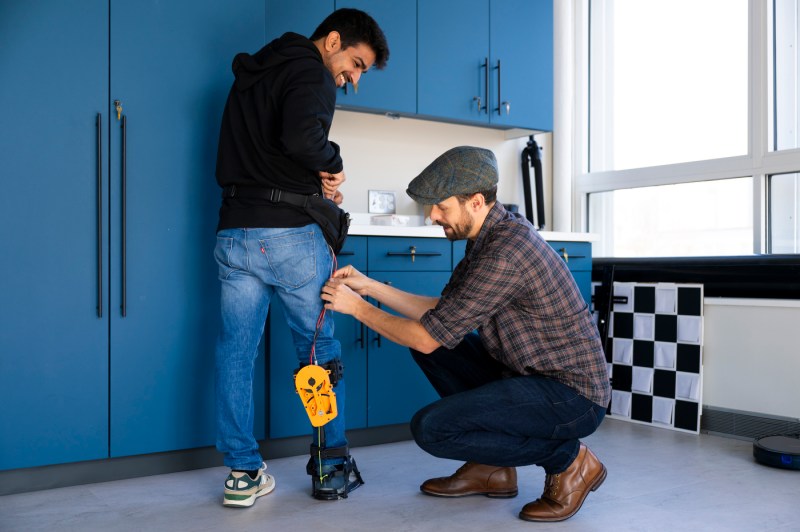
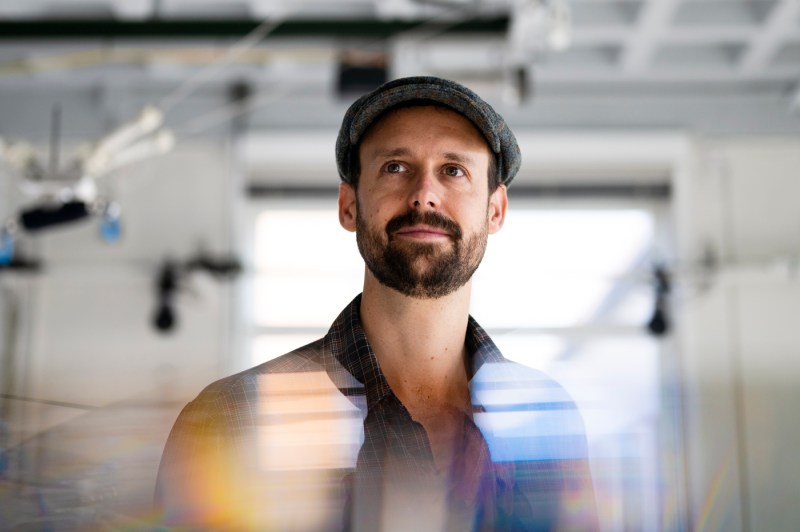
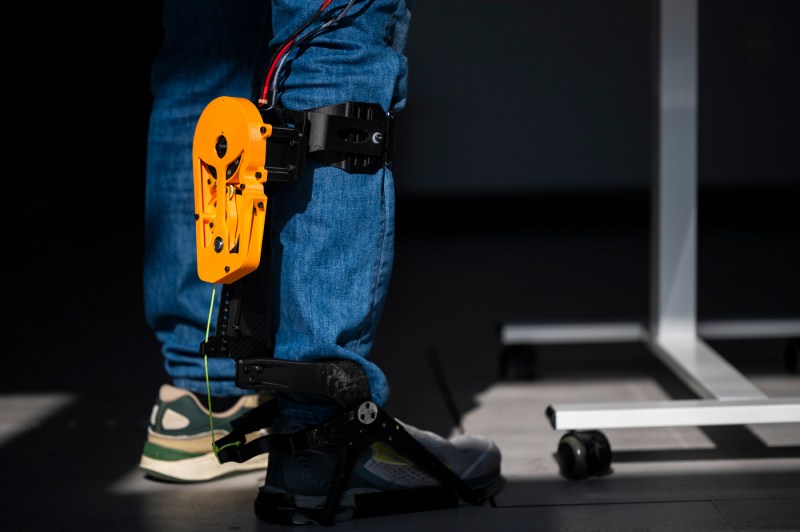
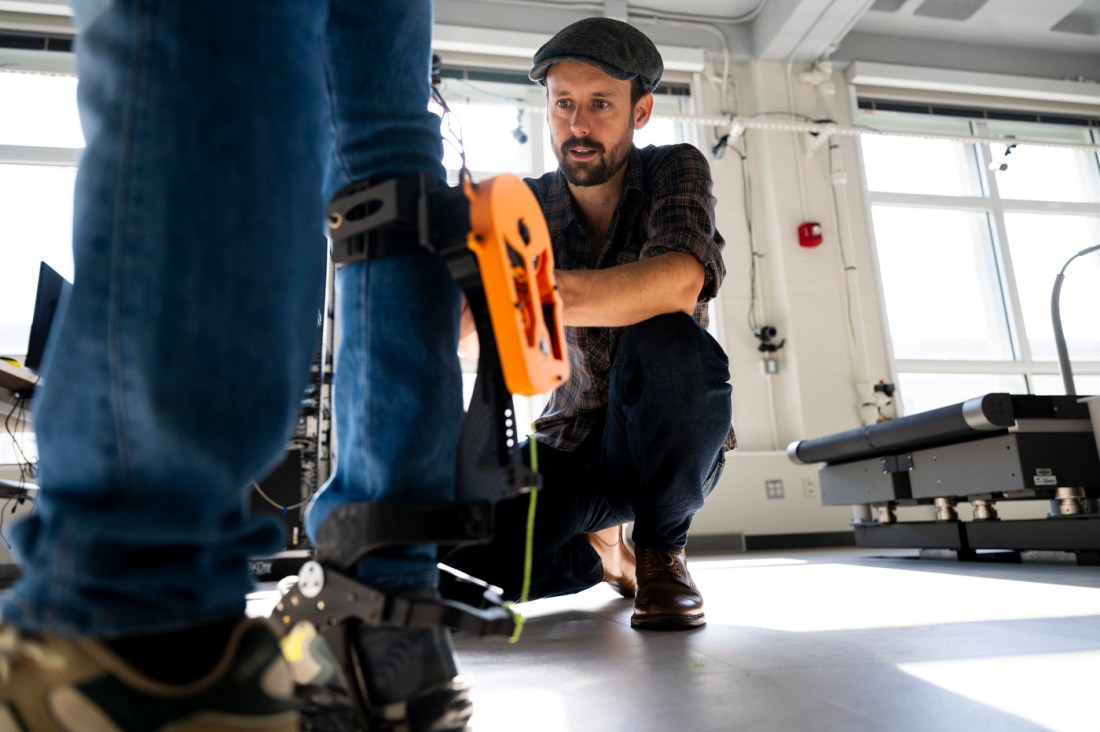
Tourk says she was able to adapt quickly to walking with the assistance of the lab’s hip exoskeleton, which by her estimate weighs about 10 pounds.
“My eventual goal is to make rehabilitative technology,” she says. “There’s a wide range of potential for a technology like this to help people who have trouble walking to be able to move around, have increased mobility and kind of take their life back. I can see my grandfather, as he ages, he’s starting to have more trouble walking, and there are so many different populations who also have that problem.”
One byproduct of her work is that Tourk no longer takes for granted one of life’s simplest pleasures.
“In biomedical engineering [as an undergraduate] we had an entire class dedicated to thinking more consciously about how we walk,” Tourk says. “Because there are a lot of very small, complex movements in walking. How would I recreate them? How do I have a machine that adapts to that and is in sync with that? It becomes much more of a complicated problem.”






